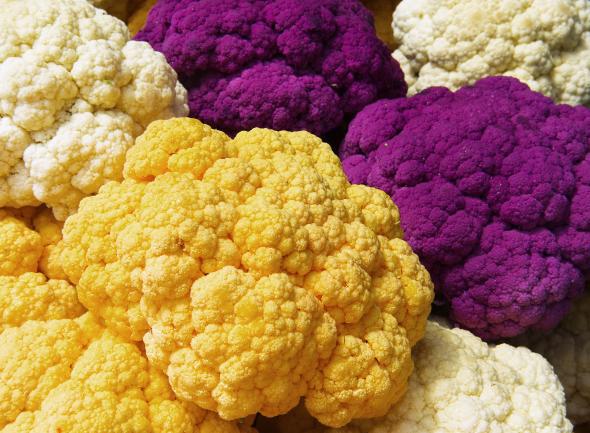There are really just two ways to do cauliflower wrong. These are 1) throwing it straight into the garbage and 2) serving it raw as a crudité. It’s not that raw cauliflower is bad, exactly—it’s just that it’s shame, maybe even a sin, not to take advantage of the sweet flavors and satisfying textures that emerge when you cook cauliflower. As long as you’re cooking it, though, you’re golden. Cauliflower is near-infallible—its ratio of hits to misses is in Dr. Luke territory—and if you have any sense, you’ll recognize its vegetal perfection and eat it joyously no matter how it’s cooked.
Nonetheless, some cauliflower preparations are more perfect than others. Roasting is the method with the highest ratio of reward to effort. If you don’t have time for a complicated recipe, don’t even think about it: Just toss your florets with a little olive oil, salt, and pepper and roast them at 400 degrees until they’re crisp-tender and gently scorched. (Spices or herbs are optional—that’s how self-sufficient a culinary entity cauliflower is.)
One of the most stunning cauliflower dishes I’ve ever eaten, though, is somewhat complicated: a classic French cauliflower gratin, which takes parboiled florets, smothers them in béchamel sauce and cheese, and browns the topping in the oven. (This type of cauliflower gratin is also known in the U.K., clunkily, as “cauliflower cheese.”) The gratin is undeniably a main dish, ushering cauliflower to its rightful place at the center of the table—all you might need to add to it are a green salad, crusty bread, and a carafe of wine.
The only way to improve on the classic dish, in fact, is to roast the cauliflower before combining it with the lavish sauce, instead of parboiling it. This way, you get to enjoy the caramelized qualities of roasted cauliflower while also eating a lot of butter and cheese. (It’s win-win, in other words.) As with all gratins, you want your main ingredient to be fully cooked before you combine it with the topping—it will soften somewhat while it’s soaking in béchamel, but not much. The post-béchamel baking period is really just to force the ingredients to get cozy with one another, to make sure everything’s the same temperature, and to melt the cheese.
Roasted Cauliflower Gratin
Yield: 4 servings
Time: About 1 hour, partially unattended
3 tablespoons unsalted butter
1 cauliflower (about 1½ pounds), separated into florets
Salt and black pepper
1 cup whole milk
⅓ cup heavy cream
2 tablespoons all-purpose flour
½ cup grated Gruyère cheese (about 2 ounces)
1. Heat the oven to 375°F. Put 1 tablespoon of the butter in a rimmed baking sheet in the oven. When it melts, add the cauliflower, season with salt and pepper, and toss to combine. Roast, stirring occasionally, until the florets are mostly tender and lightly browned, 25 to 30 minutes. (Leave the oven on.)
2. Meanwhile, put the milk and cream in a small saucepan over low heat. As they warm up, put the remaining 2 tablespoons butter in a medium saucepan over medium-low heat. When it melts, add the flour and cook, whisking constantly, until the mixture turns golden brown, 3 to 4 minutes. Gradually whisk the warm milk and cream into the butter mixture and continue to cook, whisking frequently, until the sauce has thickened slightly, about 5 minutes.
3. Transfer the cauliflower florets to an 8- or 9-inch square baking dish. Pour the béchamel sauce evenly over the cauliflower. Sprinkle the cheese on top. Bake until the sauce is bubbling and the cheese is golden brown, about 25 minutes.
Previously in You’re Doing It Wrong:
Tortilla
Spinach
Broccoli
Carrots
Vegetable Gratin
Green Beans
Macaroni and Cheese
